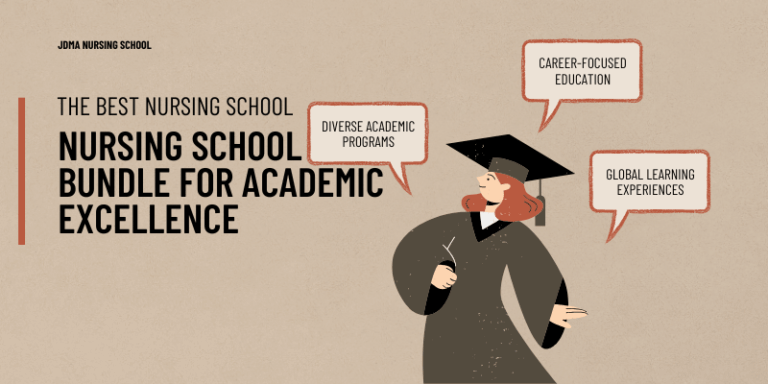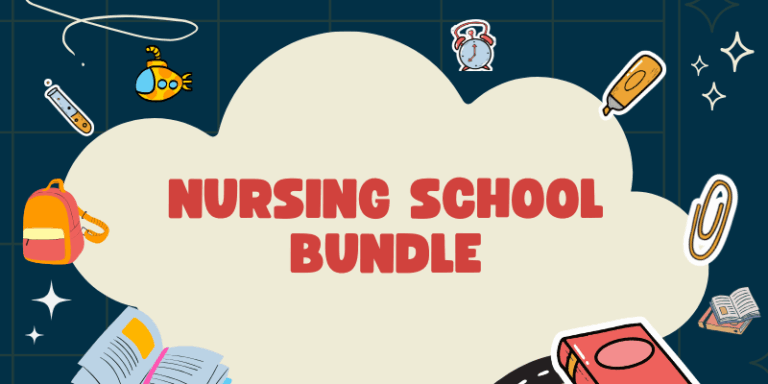
Best Nursing School Bundle for Academic Excellence
Find out which best nursing school bundle ranks best for knowledge retention and test prep. Choose the right bundle for success.
Anatomy and physiology are two of the most challenging yet rewarding subjects in nursing school. Mastering these topics not only prepares students for exams but also lays a solid foundation for clinical practice. Whether you are diving into an anatomy and physiology textbook or working through lab sessions effective study strategies are vital for success.
Understanding how the human body functions and how its structures work together is critical for nurses. Knowing how to interpret vital signs to understand complex medical conditions, anatomy and physiology are the cornerstones of nursing education. As Dr. Judith Brown, a nursing educator puts it:
“Nurses are at the frontline of healthcare, and their knowledge of anatomy and physiology is their greatest tool in patient care.“
Research from the Journal of Nursing Education shows that 85% of nursing students who excel in anatomy and physiology perform better in clinical rotations.
A high quality textbook is an indispensable tool for mastering Anatomy & Physiology especially for nursing and medical students. Choosing the right book can make complex concepts more accessible and provide a solid foundation for your studies.
Two popular options stand out:
Dr. Susan Thompson, a professor of nursing education advises,
“Using a well structured anatomy and physiology textbook helps students build a strong foundation and develop critical thinking skills”.
To maximize learning, highlight key sections, use diagrams for visual understanding and complete end of chapter questions to test your knowledge. With the right textbook and effective study techniques you will gain the confidence needed to excel in Anatomy & Physiology and apply this knowledge in real world healthcare settings.
Studying Anatomy & Physiology can feel overwhelming if you try to tackle everything at once. Instead break the material into manageable sections and focus on one system at a time. This approach allows you to absorb the information deeply and prevents burnout.
For example start by mastering the skeletal system learning about bones, joints and their functions. Once you feel confident move on to the muscular system to understand how muscles work in tandem with bones to enable movement. Gradually explore how these systems interact with others like the nervous or circulatory systems.
Dr. Karen Smith an anatomy instructor emphasizes,
“Studying one system at a time and understanding its connections to others lays a solid foundation for mastering the complexities of the human body”
This step by step method not only reduces stress but also ensures that you build a comprehensive understanding of how the body functions as an integrated whole.
The complexity of Anatomy & Physiology can be daunting but visual aids and diagrams can make learning more manageable. By seeing how systems are structured and function together you can grasp concepts more effectively and retain information longer.
Start by exploring diagrams in a trusted anatomy and physiology textbook like “Human Anatomy & Physiology” by Elaine N. Marieb and Katja Hoehn. These books are filled with clear illustrations that simplify intricate processes such as how blood flows through the heart or how muscles contract. Complement textbook learning with digital tools like Complete Anatomy or Visual Anatomy 3D which provide interactive 3D models of the human body.
A study published in Medical Education Online found that students who used visual aids improved their retention rates by 40% compared to those relying solely on text based resources. Dr. James Carter a medical education specialist explains,
“Visual tools provide an intuitive way to understand the spatial relationships within the human body, enhancing both comprehension and memory”
Integrating visual aids into your study routine helps you connect theoretical knowledge with real world application building a deeper understanding of Anatomy & Physiology and preparing you for clinical practice.
Studying Anatomy & Physiology with peers can make learning more interactive and enjoyable. Study groups provide a collaborative environment where members can share resources, discuss challenging topics and reinforce each others understanding.
One major advantage of study groups is resource sharing. Members can exchange notes recommend the best textbooks or share access to digital tools like Complete Anatomy. These collective resources often provide diverse perspectives and insights. Additionally quizzing each other on key topics such as the structure of the heart or the functions of the nervous system enhances memory retention.
Explaining concepts to group members is another valuable benefit. Teaching others forces you to articulate ideas clearly which deepens your comprehension. As educational psychologist Dr. Sarah Peterson states.
“Explaining a concept to someone else is one of the most effective ways to solidify your own understanding”
Studies also show that group learning fosters accountability and keeps participants motivated. When paired with consistent use of reliable resources like “Human Anatomy & Physiology” by Marieb and Hoehn study groups can significantly improve academic performance and prepare students for real world healthcare scenarios. Embrace peer learning as a dynamic way to master Anatomy & Physiology efficiently and effectively.
Active recall is a proven study technique that involves testing yourself to strengthen memory and understanding. Instead of passively rereading notes or textbooks active recall requires you to actively retrieve information by making it a more effective way to master Anatomy & Physiology.
Start by using flashcards to memorize key terms and concepts such as anatomical structures or physiological processes. Apps like Anki or Quizlet can help you create digital flashcards and track your progress. Another excellent method is writing answers to practice questions from a trusted textbook like “Human Anatomy & Physiology” by Elaine Marieb and Katja Hoehn. These textbooks often include end of chapter quizzes designed to reinforce your knowledge.
Research published in the American Journal of Nursing Education revealed that students who incorporated active recall into their study routines scored 20% higher on exams than those who relied solely on passive review. Dr. Laura Mitchell, a nursing educator explains.
“Active recall not only improves memory but also helps students apply their knowledge effectively in clinical settings”
By engaging in active recall regularly you will build a stronger grasp of Anatomy & Physiology preparing you for academic success and real world healthcare challenges.
Relating Anatomy & Physiology to real life clinical scenarios helps solidify your understanding and makes studying more engaging. By seeing how theoretical knowledge applies in practical settings you will find it easier to retain information and use it effectively in your future healthcare career.
For example when studying the cardiovascular system consider how blood pressure readings reflect heart function. Understanding how systolic and diastolic pressures indicate the hearts health can help you monitor a patients condition more effectively. Similarly when learning about the respiratory system think about how oxygen therapy is used to treat conditions like hypoxia or chronic obstructive pulmonary disease (COPD).
Dr. Emily Carter, a clinical instructor explains,
“Connecting textbook knowledge to clinical situations bridges the gap between theory and practice, preparing students for hands-on patient care”.
This approach not only enhances understanding but also builds confidence in applying your knowledge. By making these real world links you will gain a deeper appreciation for Anatomy & Physiology and its relevance to effective patient care.
Repetition is essential for mastering Anatomy & Physiology. Creating a weekly review schedule helps you revisit older topics while staying on track with new material. For instance dedicate one day a week to reviewing the skeletal system while studying the muscular system in parallel. This strategy reinforces earlier concepts and integrates them with new knowledge.
Dr. Rachel Brown, a professor of medical sciences emphasizes,
“Consistency in reviewing anatomy and physiology ensures that knowledge becomes second nature”
By committing to regular review sessions you will strengthen your understanding, improve retention and prepare confidently for exams and clinical applications.
Mastering anatomy and physiology requires effort but with the right strategies it becomes manageable. Invest in a reliable anatomy and physiology textbook use visual aids, practice active recall and maintain a consistent review schedule. As Dr. Judith Brown emphasizes:
“Success in nursing starts with a strong grasp of anatomy and physiology it is the foundation of patient care.”
With dedication and these tips you will not only excel in your studies but also become a competent and confident nurse.

Find out which best nursing school bundle ranks best for knowledge retention and test prep. Choose the right bundle for success.

Complete nursing school workbook bundle! Includes flashcards for nursing students, cheat sheets, dosage calculation practice, and more.

Get the instant-download Printable Nursing School Bundle—packed with study guides, cheat sheets, NCLEX prep, and digital planners.
By subscribing to our newsletter you agree to our Terms and Conditions and Privacy Policy